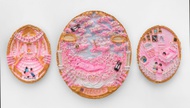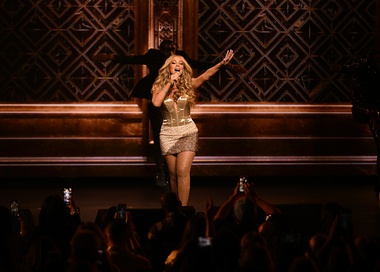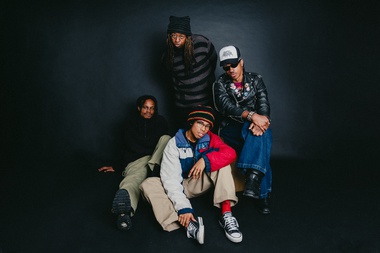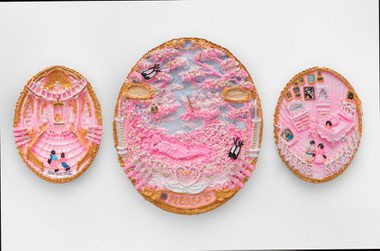Tears for Fears has been for me a guilty pleasure. Their catalog hidden in my iPod between more relevant, or at least current, acts. After Friday night’s poolside concert at Red Rock Casino, I think I’m going to drop the guilt and stick with the pleasure.
Before a surprisingly large crowd, Roland Orzabal, Curt Smith and five supporting musicians played a great rock show, mixing hits—“Everybody Wants to Rule the World”, “Seeds of Love”, “Mad World”, “Change”, “Shout”—with a nearly equal amount of newer material.
Orzabal’s voice was strong and nimble and he was chatty, talking about how he and Smith turned 50 this year. Smith struggled a bit in singing his lead parts, but appeared to genuinely enjoy himself.
The most memorable vocal performance during the 90-minute, 18-song set, however, came from backup singer Michael Wainwright. The guy looks like a soccer hooligan and sang like Aretha Franklin on the Orzabal-Oleta Adams duet, “Woman in Chains.” Given the song’s feminist message, there was something more in hearing a man sing the woman’s part.
Here’s where you need to know about Tears for Fears’ career arc: They record two No. 1 albums in the early 1980s, (the source of nearly all of the above mentioned hits). Things get ugly during the making of their third album and Smith and Orzabal part ways. Orzabal keeps the band’s name as essentially a solo artist during the 1990s, recording two albums. Smith and Orzabal reconcile and reunite in the early 2000s, recording what some said was the best Beatles album in years, 2004’s Everybody Loves a Happy Ending.
Years into this reunion the old songs sound a bit different. Not like they ran the back catalog through the Bob Dylan-blender, rendering it unrecognizable. It was more like a bit of redecorating—slightly altered arrangements and a de-cheesing of some of the '80s synth sounds.
The newer material continued to sound fresh or at least timeless in a Beatles kind of way. (It’s easy to believe that Orzabal’s primary artistic motivation these days is to continue rewriting “I Am the Walrus.”) But it was this material that kept the night from feel like a pure nostalgia trip. Art is still happening between Orzabal and Smith even though it no longer sells like it did. There’s pleasure in seeing that.







Previous Discussion: